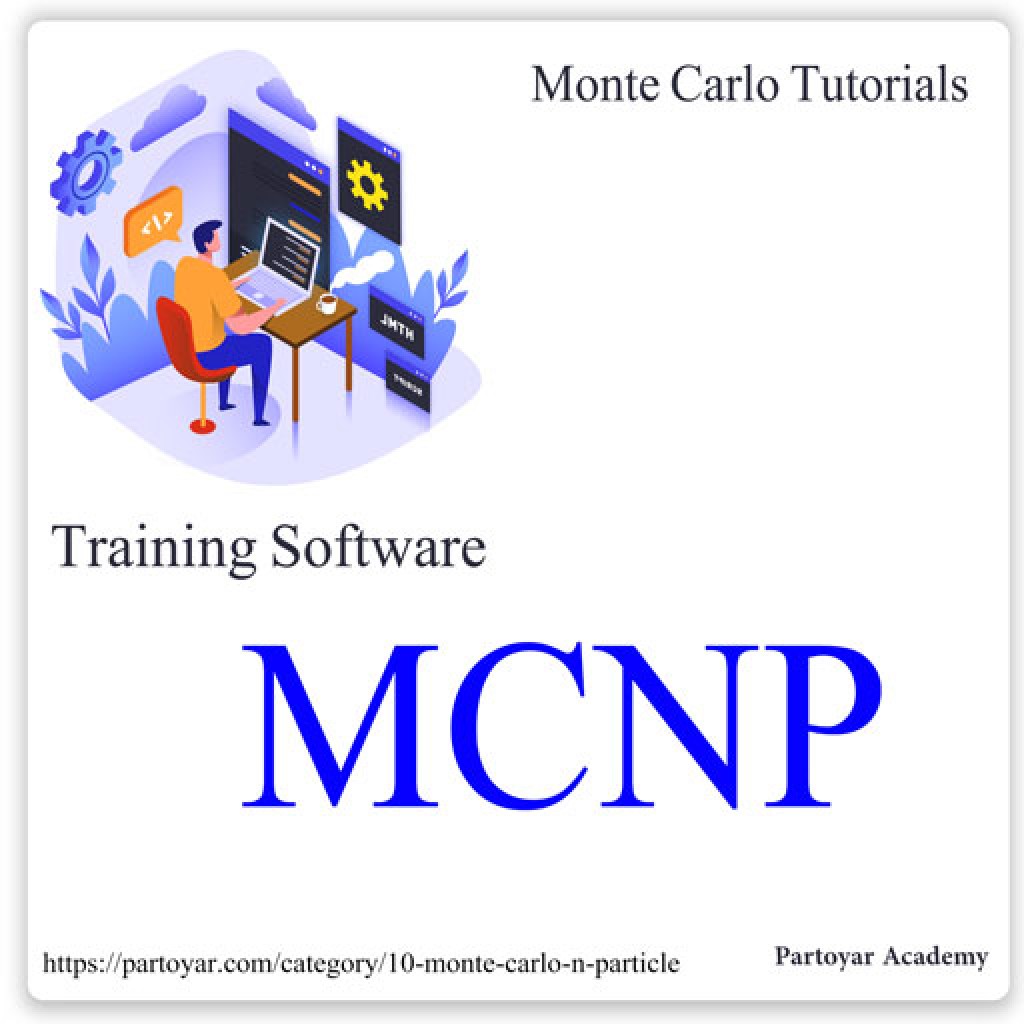
Monte Carlo N-Particle Transport (MCNP) is a general-purpose, continuous-energy, generalized-geometry, time-dependent, Monte Carlo radiation transport code designed to track many particle types over broad ranges of energies and is developed by Los Alamos National Laboratory.
In the first session, the following items are taught
• What is Monte Carlo?
• A practical example with MCNP Monte Carlo
• Familiarity with some modifications in the core code
• MCNP applications
• Introducing the MCNPX version
• Computer hardware specifications for MCNP simulation
• Prerequisites for learning MCNP code
• Necessary tools for MCNP coding
• Introduction of MCNP modules
• MCNP program control
• Structure an input program in MCNP
• Units in MCNP
• How to run MCNP program
• Practice the first session
• Explain the concept of Monte Carlo?
• Why do we have to write a description in the Monte Carlo MCNP code?
• How is a multi-line description written in Monte Carlo code?
• Hassan is a student who has a laptop with 2 RAM and 500 hard drives and a dual-core processor. Can he use it for his thesis calculations?
• Name the different modules of the MCNP program and explain each one
in the second session of MCNP training course, surface card definition was intrduced and diffrent surface card was discussed.
surface cards that introduced are as below
1) plane surface
p-px -py-pz
2) Cylindrical surfaces in mcnp
CX -CY -CZ - C / X - C / Y - C / Z
3) Conical surface in MCNP
KX -KY -KZ - K / X - K / Y - K / Z
4) spherical surface
S - SO - SX - SY - SZ
5) Macrobial levels
RPP card
RCC (RIGHT CIRCULAR CYLINDER ) card
The third session of the Monte Carlo MCNP Nuclear Code Training focus on cell card definition. In the third session, the methods of defining the cell card will be introduced. The items described in this section are as below:
1) introduction to general structure of cell card defination
2) Defining a cell card with a intersection method in MCNP
3) Cell definition by union method in MCNP
4) Use the exception method to defining cell cards in MCNP
5) How to copy cell card in MCNP
The fourth session of the Monte Carlo MCNP Nuclear Code Training
In this session, following the Monte Carlo MCNP core code training and introducing cell and surface card cards in the previous sections, we want to teach the Monte Carlo MCNP core code in the data card section. The items that will be taught in the session include the following
Problem type card training in MCNP cell card
Particle Importance Card Training in MCNP Cell Card
Cards card instruction in MCNP cell card
History Card Tutorial on MCNP Cell Card
The fifth session of the Monte Carlo MCNP Nuclear Code Training
Session 5 of the MCNP Monte Carlo Code Training Series explains the types of springs. In this session, each spring will be explained by categorizing the types of springs. The springs that will be taught in this session are
Point springs
Surface springs
Spherical volumetric springs
Cylindrical springs
Sixth Monte Carlo MCNP Nuclear Code Training Session
In the sixth session of the MCNP Monte Carlo Code Training Series, the results in the mcnp program will be examined.
Tally No. 1
Tally No. 2
Tally No. 4
Tally No. 5
Tally No. 6
Tally No. 7
Tally No. 8
Tally formula
Different modes of tali
Drawing tali
Seventh session of Monte Carlo MCNP nuclear code training
In the seventh session of the MCNP Monte Carlo Code Training Series, the drawing of geometry in the program will be examined
First, drawing geometry in mcnp program is explained with the help of reflection software
Then the geometry is drawn with the help of a visual editor.
In this session, the output file of an mcnp program will be examined. The topics that will be fully explained in this session are:
Familiarity with the output file structure
How to ensure the completion of the mcnp program
How to apply activity in the program output file
How to transfer the output file to Excel
How to get the result to the OriginPro program
How to convert mesh files
How to convert mctal files
How to work with grinconv software
How to calculate the counting rate of the program output file
Investigate the structure of the generated geometry based on the output
Statistical functions used in mcnp
How to calculate the optimal run time of mcnp program
Comparison between parallel thigh program output and normal thigh program
How to cut large output files and extract data from a few hundred gigs
After purchasing this training package, video links will be sent to you. You can also view your video file by visiting the user panel. If you have any problems at any stage of the purchase, you can call +989372846654.
session 1. Introduction to mcnp &run mcnp
 English
English
All rights to this website belong to Partoyar Academy Partoyar Academy